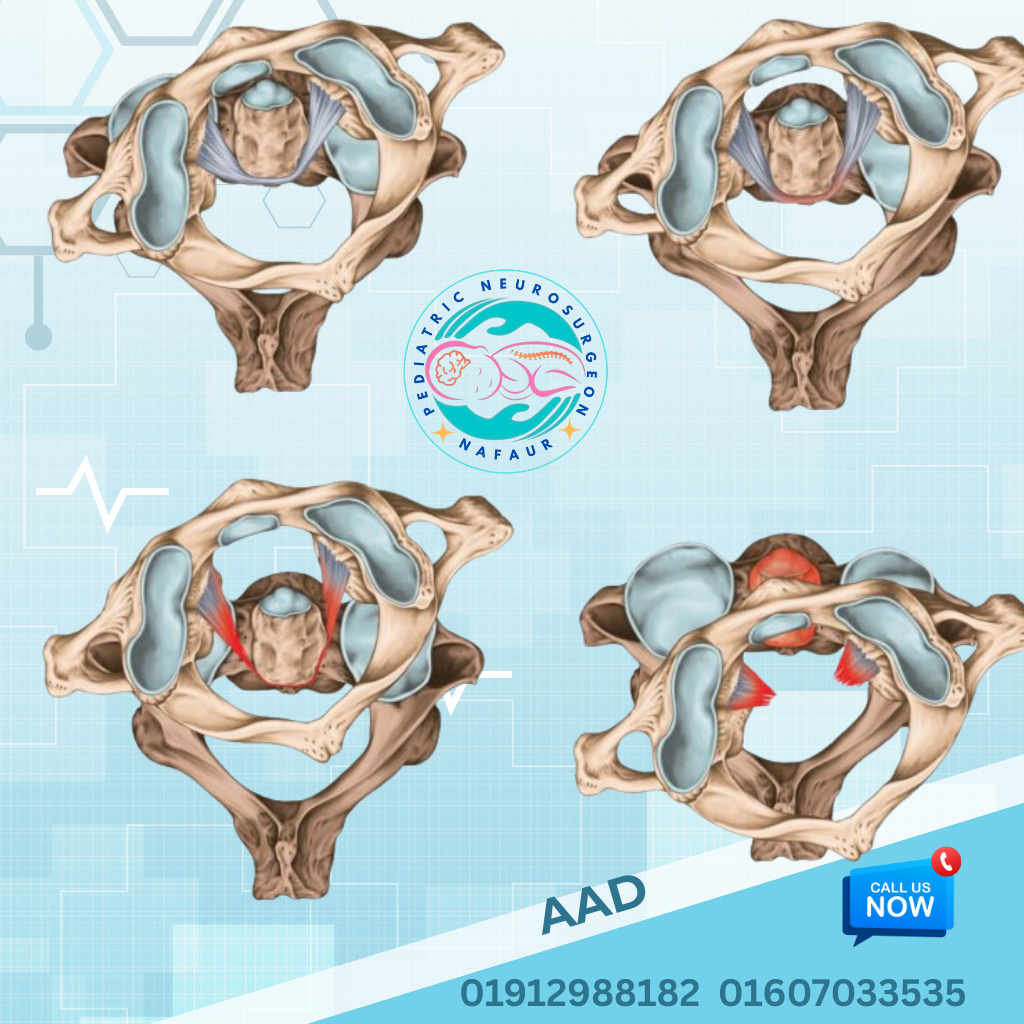Craniovertebral Junction Disorders
Craniovertebral Junction Disorders
The Craniovertebral Junction (CVJ) refers to the anatomical region where the skull base connects to the upper cervical spine—specifically the occiput (C0), atlas (C1), and axis (C2) vertebrae. This area is crucial as it houses the lower brainstem, upper spinal cord, and major blood vessels. Even minor abnormalities here can result in life-threatening neurological and mechanical complications.
In the pediatric population of Bangladesh, CVJ disorders are often underdiagnosed due to limited imaging access, lack of awareness, and misinterpretation of symptoms. Early identification and treatment by a specialist pediatric neurosurgeon is vital to prevent permanent disability or death.
🧬 Types of CVJ Disorders in Children
CVJ disorders may be congenital (present at birth) or acquired. Common pediatric CVJ abnormalities include:
Atlantoaxial Dislocation (AAD) – Instability between C1 and C2 vertebrae
Basilar Invagination – Upward displacement of vertebral elements into the skull base
Chiari Malformation – Herniation of cerebellar tonsils through the foramen magnum
Odontoid Hypoplasia or Absence – Underdevelopment of the dens (peg-like structure of C2)
Assimilation of Atlas – Fusion of the atlas with the occiput
Klippel-Feil Syndrome – Congenital fusion of cervical vertebrae
Post-traumatic CVJ Instability – Resulting from falls or head injuries
Rheumatoid or Infectious CVJ Abnormalities – Though rare in children
Each of these conditions may compromise the stability and function of the craniospinal junction and requires prompt evaluation.
🔍 Symptoms of CVJ Abnormalities in Children
The clinical presentation of CVJ disorders in children can be subtle, chronic, or acute:
Neck pain or torticollis (twisted neck)
Limited neck movement or stiffness
Head tilt or abnormal head posture
Unsteady gait or frequent falls
Limb weakness or spasticity
Swallowing difficulties or choking
Breathing problems or sleep apnea
Delayed developmental milestones
These symptoms often go unnoticed or misdiagnosed in rural areas of Bangladesh due to limited pediatric neurology services. Early evaluation by an expert like Dr. Nafaur Rahman can make a life-saving difference.
🧪 Diagnostic Approach to CVJ Disorders
A detailed clinical assessment is followed by advanced imaging:
X-ray (Dynamic cervical spine views) – Shows instability
CT Scan with 3D reconstruction – For bony anomalies
MRI of brain and cervical spine – For cord compression, Chiari malformation, syrinx
CT Angiography – In cases involving vascular compromise
Neurological and motor function tests – To assess severity
At NINS and Bangladesh Paediatric Neurocare Centre, all these services are coordinated under one umbrella for accurate and timely diagnosis.
🛠️ Surgical Management of CVJ Disorders
Surgical treatment is essential for:
Irreducible AAD or Basilar Invagination
Spinal cord compression symptoms
Chiari Malformation with Syringomyelia
Progressive neurological deficits or respiratory symptoms
Spinal instability due to trauma or infection
Common Surgical Procedures:
Posterior fusion (C1-C2 or occiput to C2/C3 fusion) using titanium instrumentation
Decompression (Foramen magnum decompression) for Chiari malformation
Odontoid resection or transoral surgery in selected cases
Anterior release procedures followed by posterior stabilization
Intraoperative neuromonitoring for safety and precision
“Treating CVJ disorders in children requires delicate, high-precision surgery. With modern neuroimaging and pediatric neurosurgical tools now available in Bangladesh, we can offer world-class care to our children.”
— Dr. Md. Nafaur Rahman
🏥 Postoperative Care & Follow-Up
Recovery after CVJ surgery in children requires:
Intensive postoperative monitoring
Immobilization with cervical collar or halo vest (as needed)
Rehabilitation and physiotherapy to regain strength and balance
Regular imaging follow-up to monitor fusion and cord decompression
Long-term monitoring for complications such as scoliosis or syringomyelia
Dr. Nafaur’s centers provide integrated rehabilitation support, making long-term recovery and reintegration into normal life possible for most children.
🌍 The Bangladesh Perspective
Despite the rising number of children presenting with neck pain, weakness, or developmental delays, CVJ disorders remain highly underdiagnosed in Bangladesh. Key challenges include:
Lack of pediatric spine expertise in most hospitals
Low referral rate from primary health centers
Inadequate pediatric neuroimaging services outside urban areas
Social stigma surrounding neurological deformities
Dr. Nafaur Rahman is leading efforts to raise awareness, provide outreach camps, and deliver affordable surgical services for children across all socioeconomic backgrounds.
👨⚕️ Why Choose Dr. Md. Nafaur Rahman for CVJ Surgery in Bangladesh?

Common Craniovertebral Junction Disorders
















